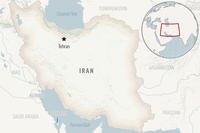The Navy is accelerating research and technology programs aimed at preparing the fleet to operate in the Arctic.
Navy leaders had been preparing to increase the services' Arctic presence by the mid-2030s, but they are now accelerating the timetable to the mid-2020s due to the warming of the waters and the rapid pace of melting ice.
Rising water temperatures means less ice in the Arctic, creating a circumstance wherein more open waterways will emerge. As a result, the Navy is putting the final touches on a new Updated Arctic Road Map designed to help the service achieve a more Arctic-capable fleet.
The Updated Arctic Road Map is aimed at paving the way toward creating the investments and technologies needed to ensure the Navy can weather the rigorous challenges of the Arctic environment.
The Office of Naval Research has worked on gear designed to remove ice from the superstructure of a surface ship using special ice-resistant paint for ships. The Navy is also designing heating elements into the superstructure of the ship itself, said Adm. Jonathan White, Navy Oceanographer and Navigator.
The Navy is working on strengthening the hulls of some ships to ensure that they are more ice-capable as well as assessing the prospects of adding more basing infrastructure in the region, White explained.
“What aircraft can I operate up there during the day? How do I get fuel to them? We want to start to make smart decisions now that lead to an Arctic-capable force in a little over ten years,” White said.
The Navy, which says it is most likely to use amphibious assault ships or destroyers in Arctic waterways in the future, says it is working on technologies designed to make it more possible for ships to operate in the harsh Arctic conditions.
An assessment done by the Navy’s Task Force Climate Change determined that the rate of melting has increased since the time of this report. In fact, the Navy is thinking it will need to prepare for a larger Arctic presence by the mid 2020’s, White said.
Although the thinning of the Arctic ice was reported by Navy submarines in the 1990s, there have been considerable changes to the Arctic environment since that time, said Robert Freeman, spokesman for the oceanographer of the Navy.
Getting ready for possible Arctic missions is not without a wide-range of challenges, White and Freeman explained. There is not as much bandwidth, apparatus or infrastructure to support communications networks in the Arctic – and there are very few ports and bases for logistical support.








